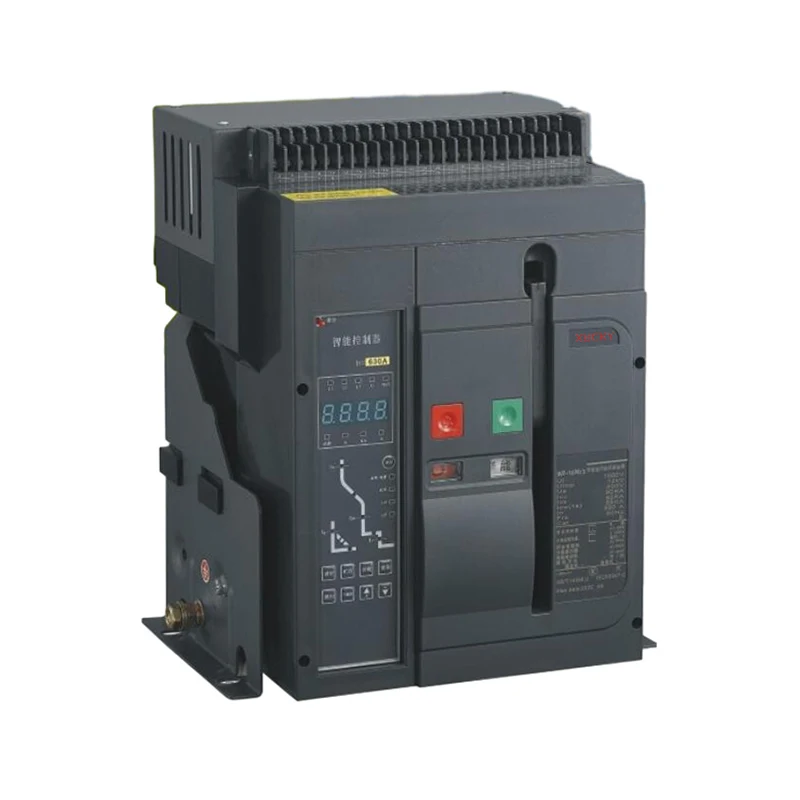Understanding Air Circuit Breakers: Types, Benefits, and Applications
2024-09-14
In the world of electrical systems, ensuring safety and protecting equipment from electrical faults is a top priority. One of the key components designed for this purpose is the Air Circuit Breaker (ACB). As a vital piece of equipment in industrial and commercial electrical setups, the ACB is used to protect electrical circuits from overloads, short circuits, and other electrical faults.
In this blog, we’ll explore what an air circuit breaker is, how it works, its types, benefits, and where it is commonly used.
What is an Air Circuit Breaker (ACB)?
An Air Circuit Breaker (ACB) is a type of circuit breaker that uses air as the medium to extinguish the arc when the breaker interrupts a fault. It is mainly used in electrical systems with high current ratings, typically from 800 amps to 10,000 amps, and operates at voltages of up to 1,000V.
Unlike oil-based or vacuum circuit breakers, which use different mediums for arc quenching, ACBs rely on atmospheric air to cool and disperse the arc. ACBs are primarily used in low voltage applications and can be found in electrical distribution systems, switchgear, and control panels.
How Does an Air Circuit Breaker Work?
When an electrical fault occurs, such as a short circuit or an overload, the air circuit breaker automatically interrupts the flow of electricity to prevent damage to the system. Here’s a simplified breakdown of how an ACB works:
1. Fault Detection: Sensors or protective relays within the system detect abnormal electrical conditions, such as overcurrent or short circuits.
2. Triggering Mechanism: When a fault is detected, the ACB’s operating mechanism is triggered, opening the circuit and breaking the current flow.
3. Arc Formation: As the breaker opens, an arc forms between the contacts due to the high voltage. This arc can generate significant heat and damage equipment if not controlled.
4. Arc Extinguishing: The ACB uses air to cool and extinguish the arc. It does this by driving the arc into arc chutes or arc splitters, where it is divided into smaller sections and cooled down by atmospheric air.
5. Circuit Isolation: Once the arc is extinguished, the circuit is fully isolated, preventing further current flow until the fault is addressed and the breaker is reset.
Types of Air Circuit Breakers
There are several types of air circuit breakers designed for different applications. Here are the main types:
1. Plain Break Type ACB
The Plain Break ACB is one of the earliest forms of air circuit breakers. It interrupts the current by simply separating its contacts in the open air. While it is simple in design, this type is less efficient in arc extinction and is mainly used for low-capacity systems.
2. Magnetic Blowout ACB
In this type of ACB, a magnetic field is used to elongate and deflect the arc away from the contacts. The arc is then quenched in an arc chute. Magnetic Blowout ACBs are more efficient in extinguishing arcs quickly, making them suitable for medium to high-capacity systems.
3. Air Chute ACB
Air Chute ACBs are equipped with special arc chutes that divide the arc into smaller sections and cool it down. The air chutes help in efficiently extinguishing the arc and are commonly used in modern low-voltage systems.
4. Draw-out Type ACB
The Draw-out ACB is mounted on a frame that allows the breaker to be physically removed or inserted into the circuit. This design makes it easier to maintain and repair the breaker without needing to shut down the entire system.
5. Fixed Type ACB
Unlike the draw-out type, Fixed ACBs are permanently installed in the circuit. While they are more compact and less expensive, they are not as easy to maintain, as any repair or replacement requires shutting down the system.
Key Benefits of Air Circuit Breakers
Air Circuit Breakers are widely used in industrial, commercial, and large-scale electrical systems due to their range of benefits:
1. High Interrupting Capacity
ACBs can handle large currents, making them ideal for protecting systems with high fault levels. They are particularly suited for low-voltage systems requiring high current ratings.
2. Arc Handling
The use of air as the arc extinguishing medium is both efficient and environmentally friendly. ACBs handle arc formation and dissipation effectively, preventing damage to equipment and reducing downtime.
3. Adjustable Trip Settings
Many modern air circuit breakers come with adjustable trip settings, allowing operators to customize the breaker’s response to specific electrical conditions. This flexibility enhances the protection of different parts of the system.
4. Reliable Performance
ACBs are known for their durability and reliability in preventing faults and ensuring the safety of electrical systems. They have a long operational lifespan, which reduces maintenance costs over time.
5. Low Maintenance
Compared to oil circuit breakers, ACBs require less maintenance. Since they don’t rely on liquids for arc extinguishing, the risks of leaks and contamination are eliminated.
6. Safety Features
Air circuit breakers are designed with various safety mechanisms, such as arc chutes and overload sensors, to ensure that faults are handled effectively without posing risks to the system or personnel.
Common Applications of Air Circuit Breakers
ACBs are used in various industries and settings where high current and low voltage systems are present. Some common applications include:
1. Industrial Plants
In factories and manufacturing plants, ACBs protect machinery and equipment from electrical faults. They help prevent downtime by quickly isolating faulty circuits and ensuring that the rest of the system remains operational.
2. Commercial Buildings
In large commercial facilities, such as office buildings, hospitals, and shopping malls, ACBs play a key role in managing power distribution. They protect critical systems like HVAC, lighting, and elevators from electrical faults.
3. Power Plants
Air circuit breakers are used in power plants to protect the low-voltage side of generators, transformers, and other critical electrical components. Their ability to handle high currents makes them ideal for these environments.
4. Marine Applications
In ships and offshore platforms, ACBs are used to ensure the safety and stability of electrical systems. These environments often face challenging conditions, such as vibrations and salt exposure, which ACBs are well-equipped to handle.
5. Data Centers
In data centers, where uninterrupted power is critical for IT operations, ACBs provide reliable protection for power distribution systems. They help ensure that any electrical fault is quickly isolated, preventing damage to sensitive equipment.

Conclusion
Air Circuit Breakers are an essential component of modern electrical systems, offering protection, reliability, and versatility in a wide range of applications. Whether you're managing power distribution in an industrial plant, ensuring the safety of a commercial building, or maintaining the stability of critical infrastructure, ACBs provide a dependable solution for electrical fault management.
When selecting an ACB for your project, it's important to consider factors such as current rating, interrupting capacity, and the type of system you’re working with. With the right ACB in place, you can safeguard your electrical system and avoid costly downtime due to faults.


